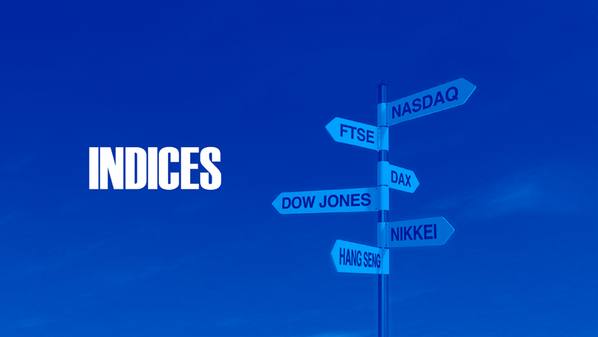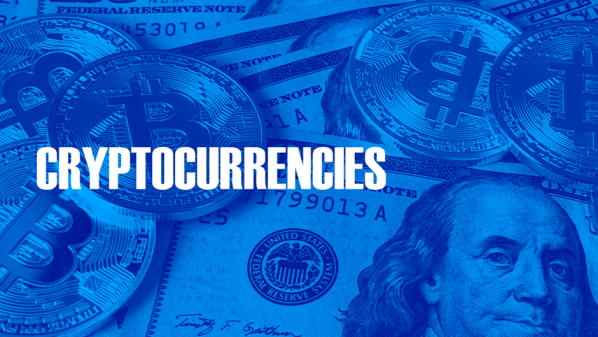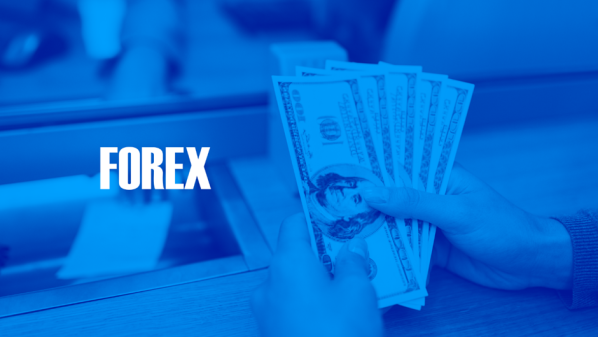
In April, the S&P 500 fell more than 8% on track for its worst month since the Covid-19 outbreak in March 2020. The Dow Jones is down about 4% this month. The outlook for big tech companies was gloomy and traders braced for a 50 basis point rate hike from the Federal Reserve next week. Technology stocks were the main target of the sell-off in April, with the tech-heavy Nasdaq down about 13% this month, on track for its worst monthly performance since the October 2008 financial crisis. Currently, the Nasdaq is in the bear market territory, more than 22% below its all-time high. Investors are increasingly concerned about the impact that rising U.S interest rates, the war in Ukraine and a worsening coronavirus outbreak could have on the global economic recovery.
U.S stocks have been volatile recently, with sharp rises and falls for several consecutive trading days. Jeffrey Halley, the senior market analyst, said: “The U.S stock market has been volatile this week, and investor sentiment has shifted from 'the stock market is over, I want to exit' to 'the bottom is coming, and I want to enter the market', which highlights the chaotic state of the market.”
Equity strategist Quincy Krosby said it has become a classic short-term trading market as volatility spikes and more bad news reverberates, with tech's forward-looking amplifying fears of a more hawkish Fed.

According to five regulatory documents filed by Tesla (NASDAQ: TSLA) with the U.S SEC, Tesla CEO Elon Musk sold at least 4.145 million shares of the company on Tuesday and Wednesday. Shares traded at $870-$1,000 for a total value of $3.989 billion. Musk issued a statement saying there are no plans to sell Tesla stock after today.
Apple (NASDAQ: AAPL) warned that it may lose as much as $8 billion in revenue in the third quarter due to the epidemic and shortages.
Intel (NASDAQ: INTC) guidance for the second quarter was lower than market expectations. Intel CEO Pat Gelsinger said in an interview with the media on Friday that the chip shortage will last longer than expected and is expected to last until 2024. Gelsinger said he had previously predicted a global shortage of chips until 2023, but now expects it to last longer as chipmakers struggle to buy enough manufacturing equipment and ramp up production to meet demand, and many factories will face greater development challenge.
U.S e-commerce giant Amazon (NASDAQ: AMZN) reported weaker than expected first-quarter results on Thursday. According to the financial report, Amazon‘s first-quarter net sales were $116.444 billion, slightly higher than analysts’ expectations of $116.3 billion. Q1 net loss was $3.844 billion, or $7.56 per share, and analysts expected earnings per share of $8.36. It was Amazon's first quarterly loss since 2015.

Bitcoin prices languished in April and investor interest began to wane, with data suggesting that money may be pulling away from cryptocurrency ETFs.
According to UBS analysis, April is on track for the largest outflow from crypto ETFs on record. Investors have withdrawn more than $400 million from cryptocurrency ETFs so far this month.
James Malcolm, head of foreign exchange and cryptocurrency research at UBS, said in a phone interview “The vast majority of people dont seem to be interested in cryptocurrencies because they are too complex and too volatile,”. Like other risk assets in the world, with central banks Cryptocurrencies, led by Bitcoin, were mercilessly sold off as interest rate hikes were announced to fend off high inflation. In November last year, Bitcoin reached a peak of nearly $69,000 and then fell all the way. The current currency price remains around $40,000.
Bitcoin (BTC) is testing support near its 100-week moving average, although upward momentum has slowed over the past month. The cryptocurrency is likely to remain in a broad trading range until a decisive breakout or crash occurs. This month BTC is on track to drop 18% and it is down about 40% from its all-time high of around $69,000 set in November.

This week, spot gold once fell to a new low of $1871.99 per ounce since February 17, as the prospect of a positive interest rate hike by the Federal Reserve helped the U.S dollar index soar to a new high of 103.93 in nearly two decades. However, Russia and Ukraine are getting further from a diplomatic solution to the conflict and the latest U.S economic data in the first quarter unexpectedly contracted, the market risk aversion was rekindled. All this news made the price of gold rebounded sharply, recovering most of the losses in the week. The cumulative decline in gold prices this week is far less than last week's 2.20%.
The U.S. Commerce Department reported on Thursday that U.S gross domestic product (GDP) unexpectedly fell at an annualized rate of 1.4% in the first quarter, marking a sudden reversal from the best U.S economic expansion since 1984.
FX strategist, Ilya Spivak said “Disappointing U.S GDP data is expected to reduce pressure on the Fed, which may not tighten policy as aggressively as suggested, this trend is unsustainable.”
Goldman sees a roughly 35% chance of negative growth a year from now. Among Wall Street's outlier forecasts, Deutsche Bank sees a “severe recession” likely in late 2023 and early 2024. This is the result of the Fed having to tighten the currency more aggressively than the market predicted.
Senior market analyst, Matt Simpson said “The dollar has to slow its gains at some point, which could bode well for gold.”

U.S oil fell more than 1% to $104.11 a barrel in late trading friday, after rising more than 2% earlier to approach the 108 mark, but oil prices rose for the fifth consecutive month. The Russian-Ukrainian war and the resurgence of the epidemic in some areas caused oil prices to fluctuate in the month. This week, international oil prices are expected to close higher again, as the possibility of Germany joining other EU members to impose an embargo on Russian oil increases, and Russia actively cuts off energy supplies to several European countries, which may further tighten the already tense global crude oil supply. Nevertheless, OPEC+ is expected to maintain the current policy of gradual production increase, and the increase in U.S production cannot make up for the gap caused by the reduction of Russian labor.
U.S oil rose nearly 3 percent in April, marking its longest monthly winning streak since January 2018. As the war enters its third month, Germany has signaled it will not oppose the EU's oil embargo on Russia, but has expressed doubts that the move will be the most effective way to hit Putin.
Senior energy trader Rebecca Babin said demand issues were seen as short-term, while supply concerns persisted, driving oil prices higher. Next week will be critical, as the Saudi official selling price will be the touchstone for how badly the demand has been damaged.

The U.S dollar index rose nearly 5% in April, its biggest monthly gain since 2012, even as the greenback fell on Friday ahead of the Federal Reserves policy meeting next week. A slump in U.S stocks helped boost demand for safe-haven currencies.
The U.S dollar index was last down 0.45% at 103.19, paring monthly gains, with technical indicators likely to suggest a short-term top. The dollar briefly tested session lows after reports that Russia used its dollar reserves to repay bonds, though lower volatility helped limit the range.
However, some analysts pointed out that the market has already priced in the Fed's sharp tightening of policy, which may restrain future rises in U.S. bond yields and the dollar's gains.
The euro rose 0.46% to 1.0545 against the dollar, with moderate two-way trade, and European bond yields rose after the release of inflation data in the euro zone. ECB chief economist Philip Lane said the region will not return to a low inflation track and has a negative impact on the economy Growth outlook warns. Euro dipped 4.6% in April.
the European Central Bank is likely to raise interest rates early in the third quarter. Now expects the European Bank to raise interest rates by 20 basis points in July.
Poor UK consumption data weighed on the pound, which hit a new low of 1.2861 against the dollar since early November 2020.
OneProSpecial Analyst
Buy or sell or copy trade crypto CFDs atwww.OneProglobal.com
The foregoing is a personal opinion only and does not represent any opinion ofOneProGlobal, nor is there any guarantee of reliability, accuracy or originality in the foregoing.
Forex and CFD trading may pose a risk to your invested capital.
Before making an investment decision, investors should consider their own circumstances to assess the risks of investment products. If necessary, consult a professional investment advisor.
www.oneproglobal.com
Leave a Reply